The biggest strawberry producer in the world is the state of California. But, as dominantly productive as the strawberry growers in that state are, other regions of the United States are quite productive as well. Florida is also known as a big-time strawberry state. The standard method used in each of those two states is the typical commercial plasticulture method.
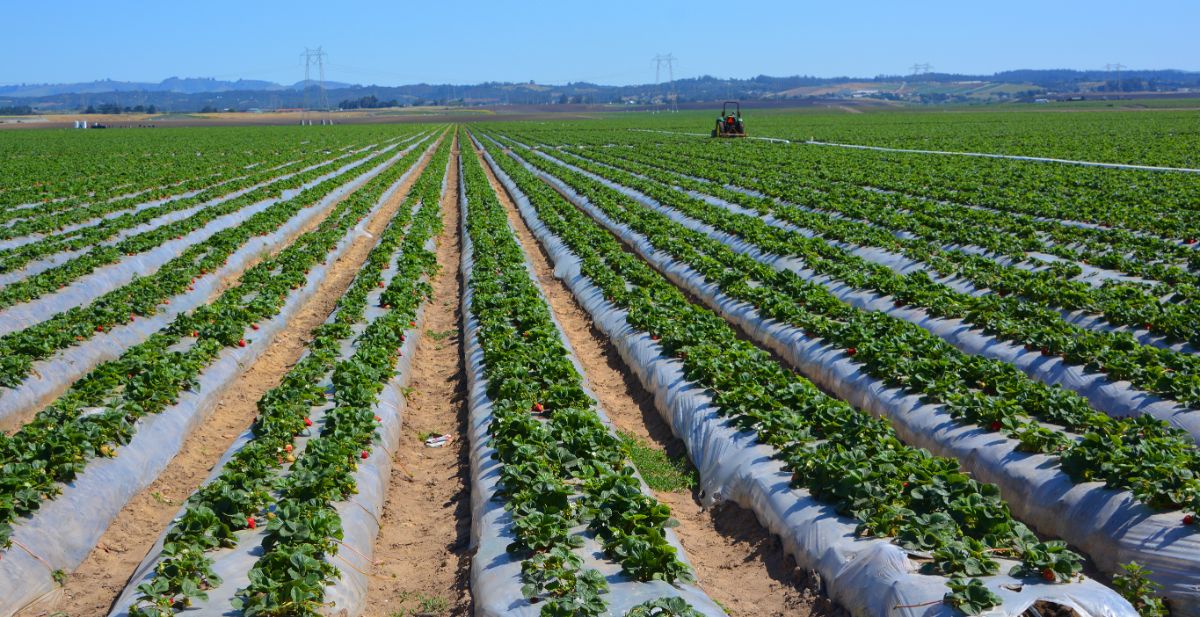
What many people do not know is that North Carolina, and particularly the coastal regions, also has a booming strawberry industry. And, the methods used in that state are spreading to the surrounding regions. In the mid-1980s, NC strawberry growers and NC State University partnered to develop a better way to grow strawberries in the state. The work of this pairing led to slight adaptations of the California and Florida plasticulture practices which resulted in the Southeastern plasticulture method. Southeastern Plasticulture strawberries can be lucrative venture. This post is a brief introduction.
Jump to:
Southeastern Plasticulture Strawberries: Details
The Southeastern plasticulture method begins like most agricultural ventures do: with prepared land. After the land is cultivated and fertilized, special tractor-borne equipment creates mounds of elevated earth and subsequently covers the mounded rows with black plastic mulch. Under this mulch, a thin hose/tube is laid. This drip tape will serve as the means of irrigation and fertilization as the strawberries grow.
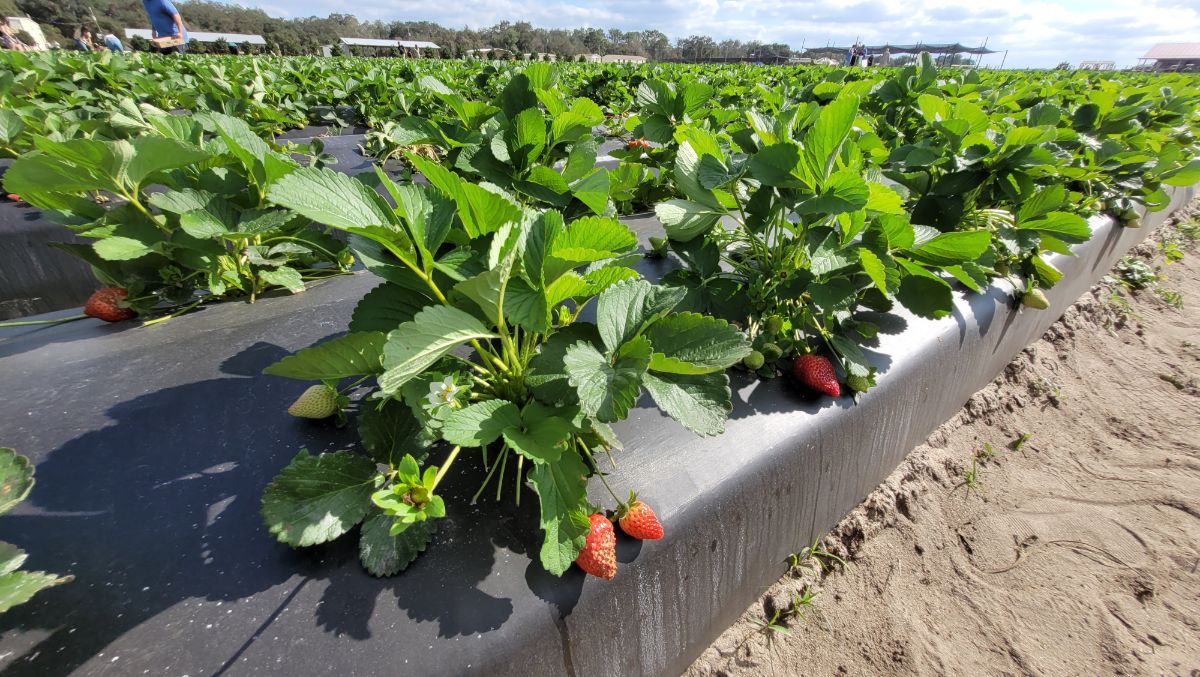
The strawberry plants are planted during the fall of each year. While strawberry plants are perennial, virtually all commercial growers now treat them as an annual, replanting each fall. The strawberries grow and establish themselves during the warmer periods throughout the fall and winter. Often, Southeastern plasticulture strawberries will have to be covered to prevent cold injury. This is generally accomplished by using thin, translucent row covers made of spun-bonded polyester.
Being established prior to the colder winter temperatures give fall-planted strawberry plants the ability to begin rapidly growing with the warming that comes in later winter and early spring. During this time, each strawberry plant vigorously grows and sends forth its strawberry flowers from the buds it developed after being planted in the fall. Damage from late frosts in March and April is prevented by the use of overhead irrigation at night.
Southeastern Plasticulture Strawberries:Density & Production
There are several key advantages to the Southeastern plasticulture method of producing strawberries. The fall planting allows a full harvest to be reaped in only seven or eight months. Spring-planted strawberries require a full year of non-production growth prior to the first full harvest. The density of strawberry plants is also much greater. It is not uncommon for 17,500 strawberry plants per acre to be planted in this method. The resultant yield of Southeastern plasticulture strawberries is 15,000 and 25,000 pounds of strawberries per acre.
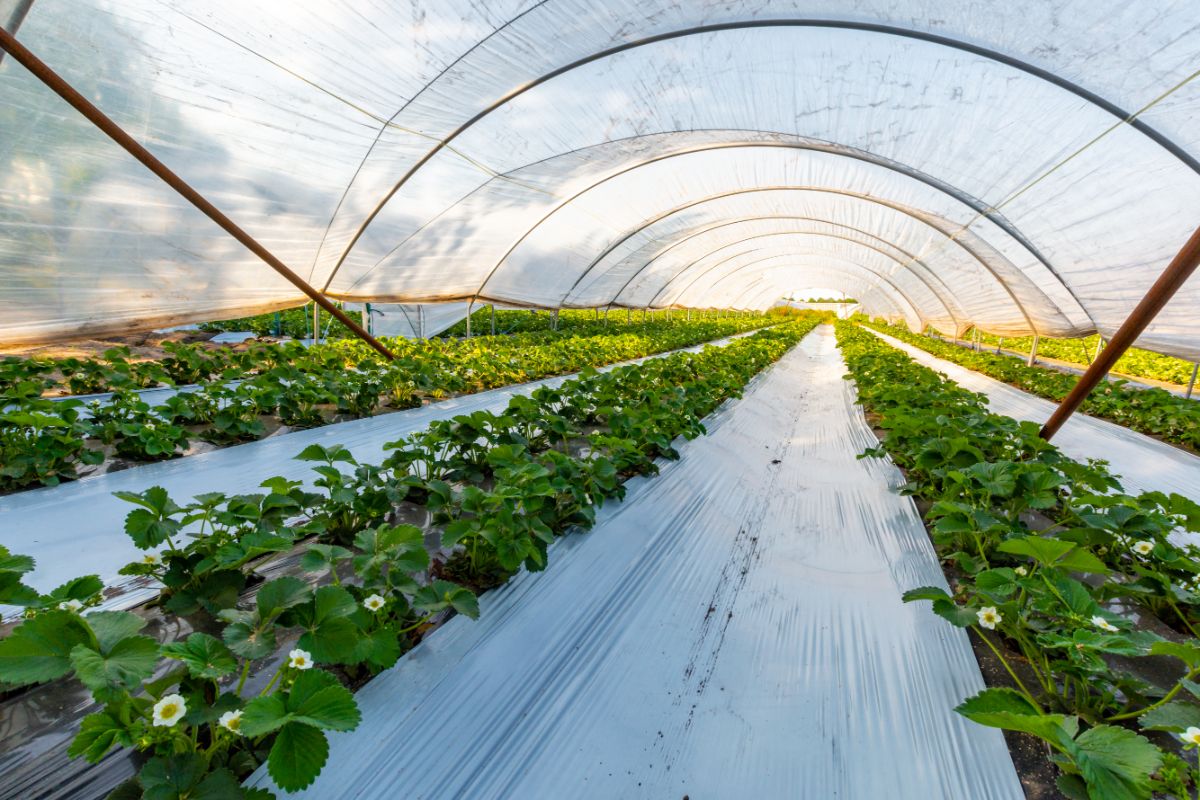
However, such plantings are not put into the ground without significant investment on the part of the strawberry farmer. The specialized equipment that allows the method is not cheap (click the link below in the conclusion to see the equipment in action), and purchasing that many strawberry plants runs up a tab, even when bought wholesale. There are also maintenance and protection costs to make sure there is a full crop to harvest.
Strawberry Plant Varieties for Southeastern Plasticulture
Chandler strawberries are the most popular variety for Southeastern plasticulture and have been widely planted for years. A high yield of bright red, large, delicious strawberries gives this variety its appeal. Camarosa is a California variety that has also made inroads. It is firmer than Chandler, and this quality makes it ideal for wholesale. It does, however, need to be picked precisely when it is at its peak ripeness. Sweet Charlie is also popular. It hails from Florida, ripens early, and has a distinctive and very sweet flavor. Other less-popular varieties used in plasticulture are: Albion, Camino Real, Gaviota, Seascape, Strawberry Festival, Treasure, and Ventana. (For details on a host of cultivars, see the Strawberry Varieties reference page.)
Southeastern Plasticulture Strawberries: Conclusion
Strawberry farming is not for the faint of heart. Even so, new technological developments are being made to automate more aspects of the industry. However, whether the berries themselves are plucked by strawberry picking robots or via manual labor, people will line up to buy this favorite fruit.
To get a better idea of the processes and equipment involved in growing plasticulture strawberries, see here: Growing Strawberry Plants Commercially. For more information on strawberry gardening and growing your own strawberries successfully, visit the reference page on Growing Strawberries.

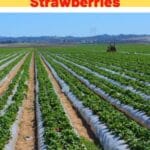
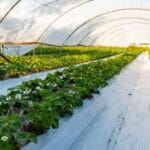
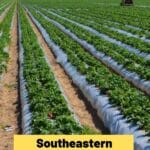
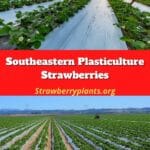
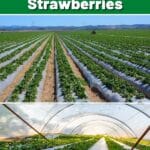




Tonia says
Will the strawberry plants grown commercially with plasticulture not produce more than one year? What’s the benefit of having to replant every year?
Mary Ward says
They could but they grow them as annuals. With the plastic, they can’t spread by runners and form matted rows. This keeps high producing plants that don’t need renovation and makes it easy to till and restart to keep weeds down.
Rick says
If I use the hill method and plant strawberries through weed barrier / plastic. Removing all buds and runners the first year , how many years can I harvest from the same mother plants?
Jeff says
How many pounds of berries does one plant typically produce?
Mr. Strawberry says
Jeff,
This post should help: Strawberry Plants Per Person. Good luck!
s m gropp says
are stolons allowed to propagate, and if so how if plants have plastic weed skirts?
Mr. Strawberry says
s m gropp,
In the plasticulture setup, the answer is “no.” When cultivating plasticulture strawberries, they are treated as annuals and replanted each year. The runner plants are not allowed to root.